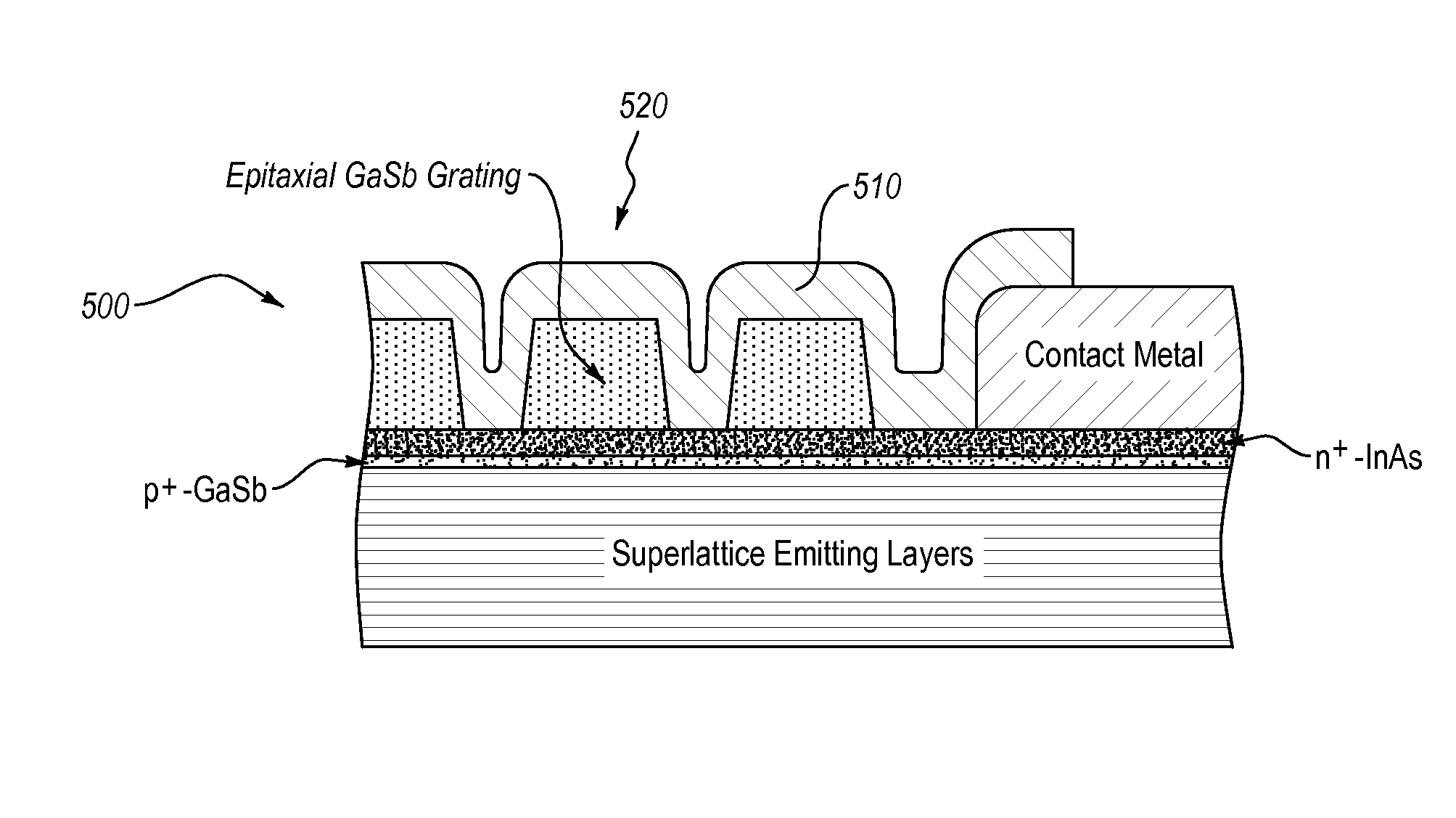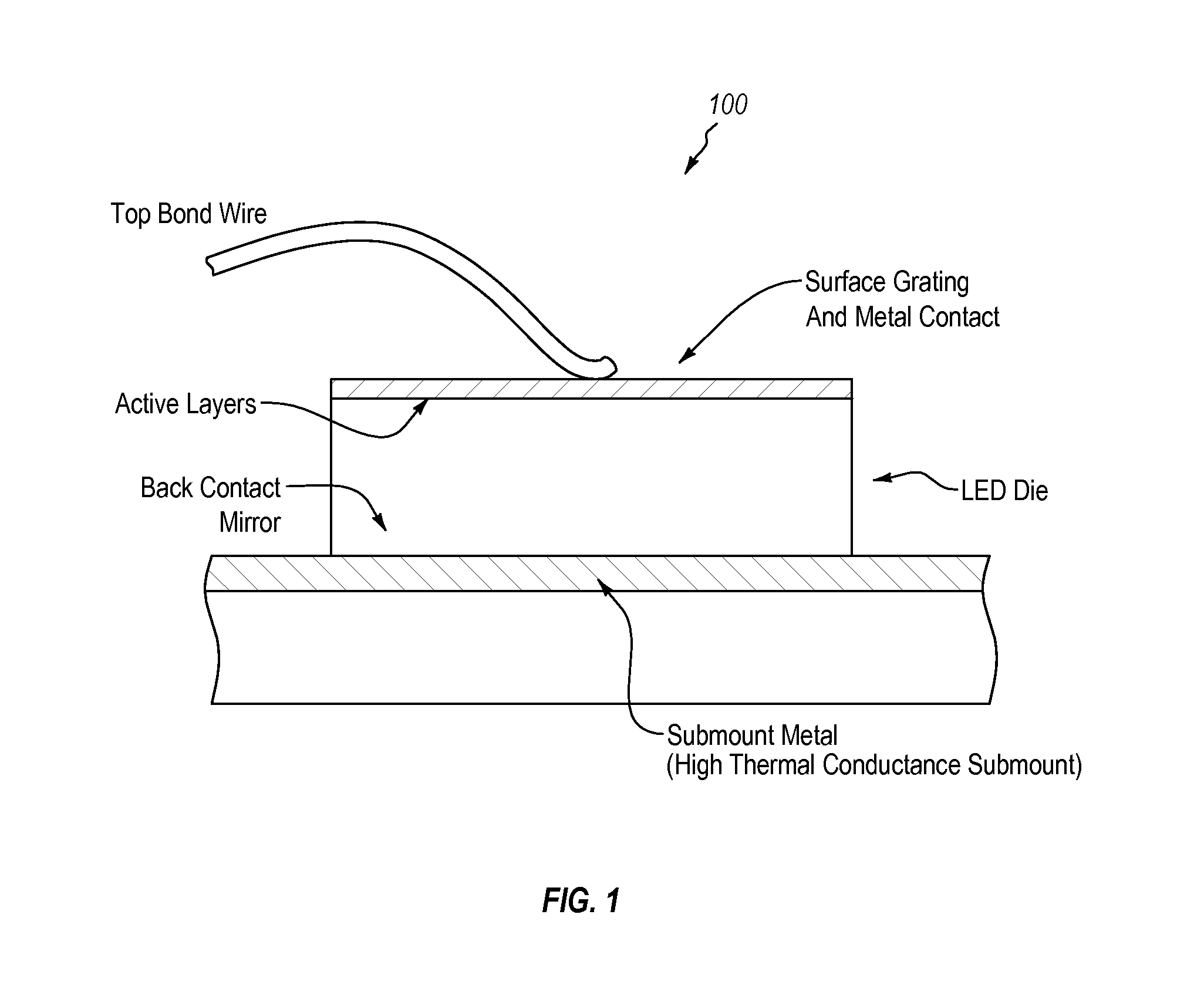Front-side emitting mid-infrared light emitting diode
- Summary
- Abstract
- Description
- Claims
- Application Information
AI Technical Summary
Benefits of technology
Problems solved by technology
Method used
Image
Examples
Embodiment Construction
[0030]The present invention extends to systems, methods, and apparatus configured to generate mid-infrared LEDs. In particular, embodiments of the present invention comprise mid-infrared high-brightness LEDs that are configured to take advantage of one or more existing support technologies. Additionally, embodiments of the present invention provide unique and novel configurations for LED devices.
[0031]The embodiments disclosed herein of the present mid-infrared LEDs include devices with wavelengths that range from about 3 to 20 μm. In at least one embodiment of the present invention, particular wavelengths of light can be obtained by making specific adjustments to the antimonide-arsenide semiconductor hetero structure layer thicknesses and by making specific adjustments to the sizes of the light-extraction buttes on the surface and to the thicknesses of the anti-reflection coating. In at least one embodiment, the mechanical, electrical, optical, and packaging features and structures...
PUM
 Login to View More
Login to View More Abstract
Description
Claims
Application Information
 Login to View More
Login to View More - R&D
- Intellectual Property
- Life Sciences
- Materials
- Tech Scout
- Unparalleled Data Quality
- Higher Quality Content
- 60% Fewer Hallucinations
Browse by: Latest US Patents, China's latest patents, Technical Efficacy Thesaurus, Application Domain, Technology Topic, Popular Technical Reports.
© 2025 PatSnap. All rights reserved.Legal|Privacy policy|Modern Slavery Act Transparency Statement|Sitemap|About US| Contact US: help@patsnap.com



